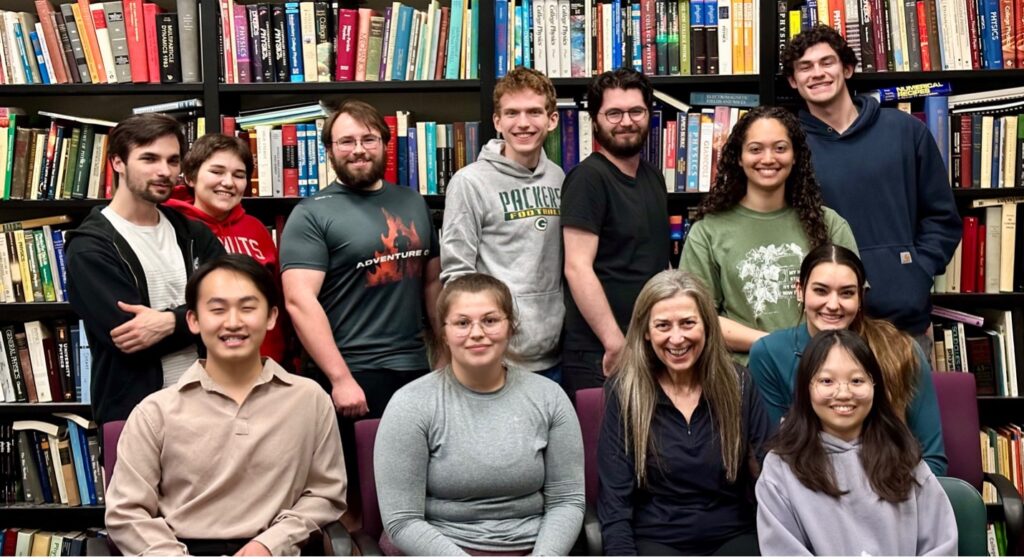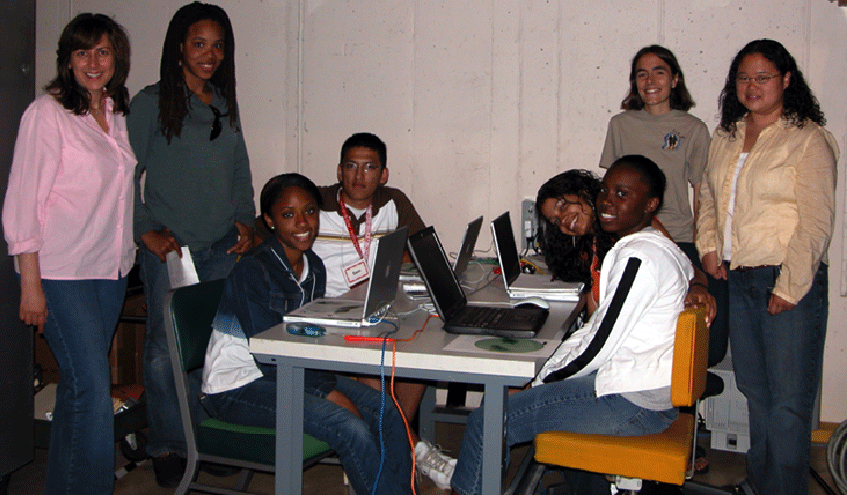In 2020 Professor Gilbert assembled a diverse group of talented undergraduate students dubbed “the Cnidarians” to do massively parallel data processing that can only be done with natural intelligence. Drawing strength from diversity, this collaboration has resulted in the discovery of two new, unknown mineral phases on the forming surface of coral skeletons and abalone nacre, one of which was previously unknown in nature, calcium carbonate hemihydrate (CCHH). Previously this was a material, prepared only synthetically, now it is a mineral.
The Cnidarians continue to grow in number and skills. Today, in September 2024, there are 12 of them actively working, and overall there have been a total of 48 Cnidarians, mostly from the Mercile J. Lee Scholars Program at UW-Madison.
Read more in Pupa’s Nature blog post and in the paper published in 2024 in Nature Communications.

 Professor Gilbert in Brains On! episode on color: Why does green mean go? And other color conundrums.
Professor Gilbert in Brains On! episode on color: Why does green mean go? And other color conundrums.
Professor Gilbert is an active member of the NSF-Center for the Integration of Research, Teaching and Learning (CIRTL) at UW and an instructor for a hands-on spectromicroscopy experiment, as part of the Pre-college Enrichment Opportunity Program for Learning Excellence (PEOPLE) summer program. The PEOPLE program seeks to support and encourage underrepresented and at risk middle and high school students from Wisconsin and prepare them as future undergraduates. Upon successful completion of the PEOPLE program and admission to the university, PEOPLE students are eligible for full tuition remission for the duration of their studies at UW-Madison. PEOPLE students identified the location of the nucleus in cancer cells, as described above. Professor Gilbert also serves as a mentor for the Research Experience for Undergraduates (REU) program.

The “Physics in the Arts” book, coauthored by PUPA Gilbert and Willy Haeberli, published by Elsevier-Academic Press, Amsterdam, January 2008.
ISBN 978-0-12-374150-9